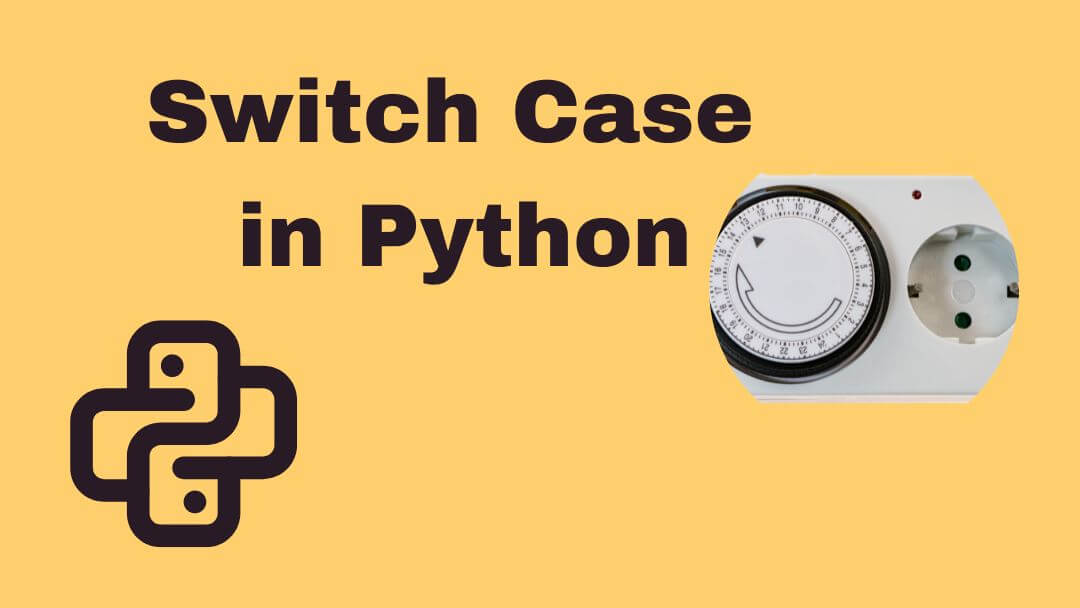Introduction
Switch case in Python statements can be a powerful tool for controlling your program’s flow.
While Python doesn’t have a built-in switch case construct like other programming languages, there are clever ways to achieve similar functionality.
This comprehensive guide will delve into the world of “switch case Python” and explore various techniques to handle conditional branching effectively.

Understanding the Need for Switch Case in Python
Switch case statements are essential in programming as they allow you to execute different blocks of code based on the value of a particular expression or variable.
While Python provides if-elif-else statements for conditional branching, the switch case construct streamlines code readability and maintains a clean, structured workflow.
The Traditional Approach
In Python, the traditional approach to achieving switch case behavior involves using dictionaries or functions as alternatives to a direct switch case construct. Here is a fundamental example:
The code
def case_one():
return “This is case one”
def case_two():
return “This is case two”
def case_default():
return “This is the default case”
switch_case = {
“case1”: case_one,
“case2”: case_two,
}
case = “case1”
result = switch_case.get(case, case_default)()
print(result)
In this example, we define functions for each case and use a dictionary to map case names to their respective functions.
This technique delivers a flexible and extensible way to handle switch case scenarios in Python.
The Pythonic Way: Using Decorators
Pythonic code often emphasizes simplicity and readability. To achieve a more Pythonic switch case, we can utilize decorators. Here’s how it works:
The code
def switch_case(case_name):
def decorator(func):
func.switch_case = case_name
return func
return decorator
@switch_case(“case1”)
def case_one():
return “This is case one”
@switch_case(“case2”)
def case_two():
return “This is case two”
def case_default():
return “This is the default case”
cases = [case_one, case_two]
case = “case1”
for func in cases:
if hasattr(func, “switch_case”) and func.switch_case == case:
result = func()
break
else:
result = case_default()
print(result)
In this Pythonic approach, we use decorators to associate each function with a case name.
This enhances code readability and maintainability, making it easier to understand and modify the switch case logic.
The Elegance of the match-case Statement (Python 3.10+)
Python 3.10 introduced the match-case statement, which simplifies switch case scenarios. This new feature provides a more intuitive way to handle multiple conditions:
The code
def switch_case(case):
match case:
case “case1”:
return “This is case one”
case “case2”:
return “This is case two”
case _:
return “This is the default case”
result = switch_case(“case1”)
print(result)
The match-case statement makes switch case logic more straightforward and readable, reducing the need for complex workarounds.
When to Use Switch Case in Python
Switch casein Python statements are beneficial when you have multiple conditions to evaluate based on the same expression or variable. Some common use cases include:
- Menu selection in a text-based interface.
- Handling different types of user input.
- Managing configuration options with predefined values.
- Parsing and processing data from external sources.
Conclusion
While Python doesn’t provide a built-in switch case construct, various elegant and Pythonic ways exist to achieve the same functionality.
Whether you opt for the traditional dictionary approach, use decorators, or embrace the new match-case statement in Python 3.10+, you have the tools to make your code more readable and maintainable.
This guide explored these techniques, allowing you to master the switch case in Python. You can confidently implement conditional branching in your Python programs precisely and efficiently.
1. What is the purpose of a switch case in Python, and why is it important?
Response: Switch case statements in Python allow you to execute different blocks of code founded on the value of an expression or variable.
While Python lacks a built-in switch case construct, alternatives like dictionaries or decorators help streamline code readability and maintain a structured workflow, making your code more coherent and maintainable.
2. Can you provide an example of a traditional approach to implementing switch case behavior in Python?
Response: Certainly! In the traditional approach, you can define functions for each case and use a dictionary to map case names to their respective functions. Here’s a basic example:
The code
def case_one():
return “This is case one”
def case_two():
return “This is case two”
def case_default():
return “This is the default case”
switch_case = {
“case1”: case_one,
“case2”: case_two,
}
case = “case1”
result = switch_case.get(case, case_default)()
print(result)
3. How can I implement the switch in Python way?
Response: You can use decorators to achieve a more Pythonic switch case. Here’s how it works:
The code
def switch_case(case_name):
def decorator(func):
func.switch_case = case_name
return func
return decorator
@switch_case(“case1”)
def case_one():
return “This is case one”
@switch_case(“case2”)
def case_two():
return “This is case two”
def case_default():
return “This is the default case”
cases = [case_one, case_two]
case = “case1”
for func in cases:
if hasattr(func, “switch_case”) and func.switch_case == case:
result = func()
break
else:
result = case_default()
print(result)
4. What is the match-case statement in Python 3.10, and how does it simplify switch case logic?
Response: Python 3.10 introduced the match-case statement, simplifying switch-case scenarios. It provides a more intuitive way to handle multiple conditions. Here’s an example:
The code
def switch_case(case):
match case:
case “case1”:
return “This is case one”
case “case2”:
return “This is case two”
case _:
return “This is the default case”
result = switch_case(“case1”)
print(result)
The match-case statement makes switch case logic more straightforward and readable, reducing the need for complex workarounds.
5. When should I use switch case in Python, and what are some common use cases?
Response: Switch case statements are beneficial in Python when evaluating multiple conditions based on the same expression or variable. Common use cases include:
- Menu selection in a text-based interface.
- Handling different types of user input.
- Managing configuration options with predefined values.
- Parsing and processing data from external sources.
It helps maintain clean and structured code in scenarios requiring conditional branching.
